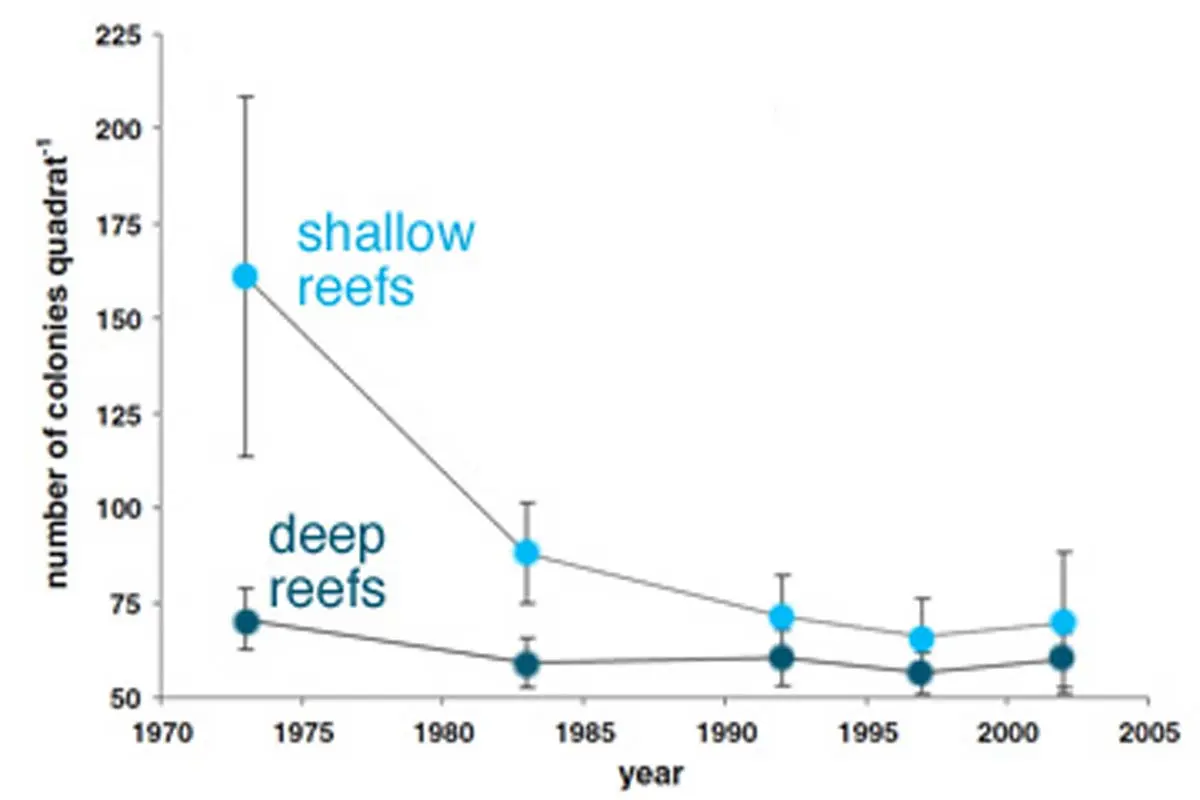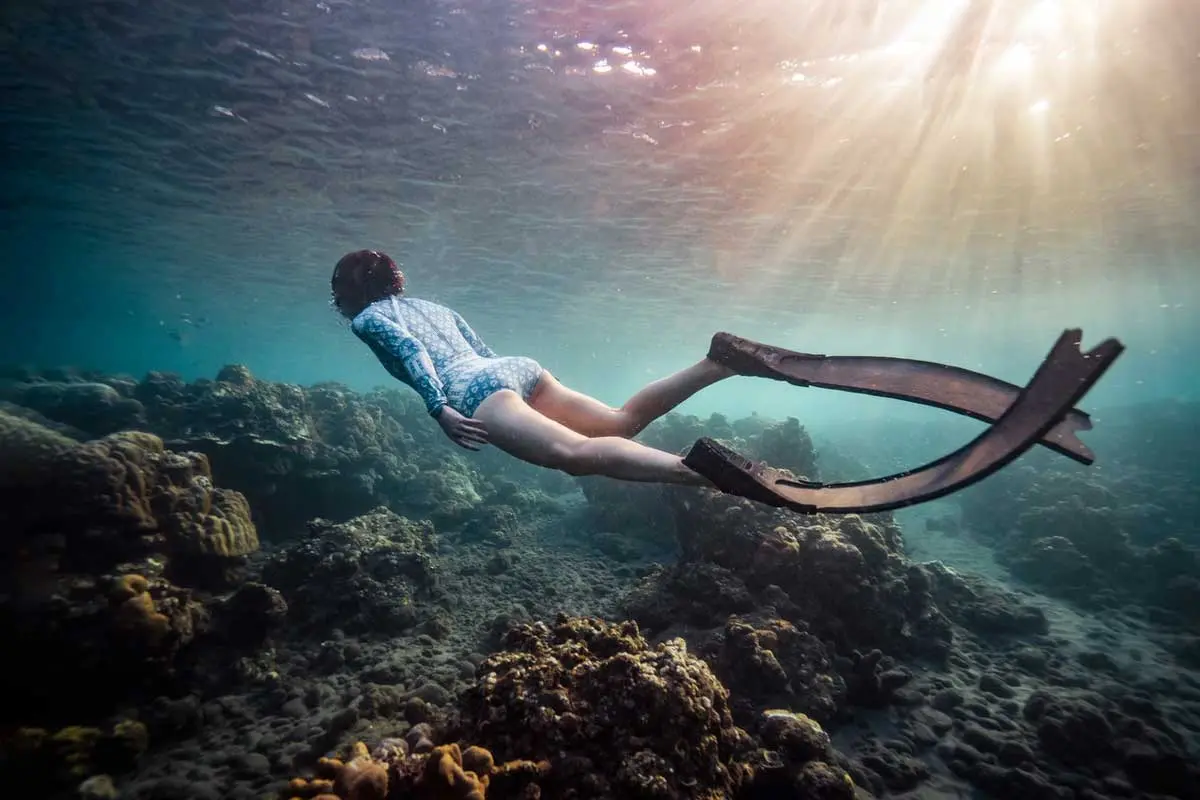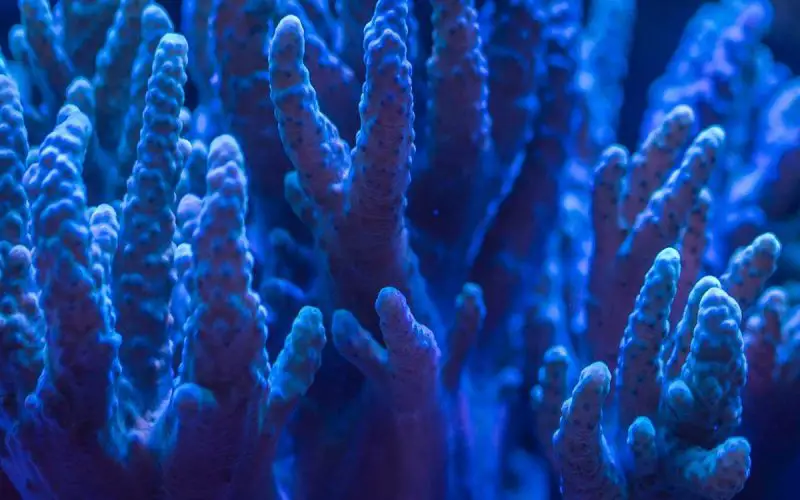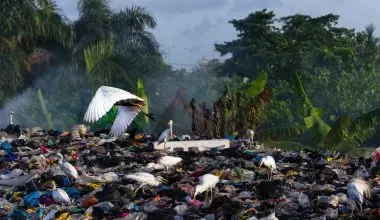Table of Contents Show
Coral reefs form one of the most diverse ecosystems of world. Despite occupying only 0.1% of the ocean’s area, coral reefs are home to one quarter of all marine species found.
Some species of corals, also called “hard corals”, extract calcium carbonate from the seawater and create a hard exoskeleton. These skeletons are the foundation of coral reefs.
Even with all the benefits of reefs known to us; about half of the world’s shallow water reefs are already gone.
With continuing activities at this rate, it is only a matter of few years before these life sustaining natural wonders are completely extinct.
Coral reef degradation is more common in shallow waters. This can be proven by the following 30-year study that shows how coral numbers have declined in Bonaire and Caracao. To give you a visual representation of coral reef decline, here’s a graph:

Major Threats to Coral Reefs
There are several threats to reefs, divided into natural and human, that need to be quickly addressed.
1. Natural disasters
Looking at natural dangers, large and strong storms like cyclones and hurricanes are a very common threat to shallow coral reefs.
The waves from these storms break the reef into fragments by tearing them apart or flatten the reef.
A few storms rarely kill entire colonies of coral. However, these storms provide an opportunity for the algae to grow faster than the slow-growing corals can recover from damage.
These algae negatively impact the growth and recruitment of reefs, making it difficult for them to recover now.
These algal blooms were recorded after the Hurricane Allen in 1980. Scientists saw growth of extensive long-lived algae on the surface of water over the next 2 to 3 years.
2. Climate Change
One of the biggest threats to coral reefs is climate change. Increasing temperatures and changing climate patterns have put incredible stress on the reefs.
Coral reefs have a symbiotic relation with zooxanthellae algae. In this relationship, algae provide nutrients to the reef and get shelter and protection in return. This way the reef is healthy and algae is protected from herbivorous marine life.
The diverse colors of coral are also due to photosynthetic pigments of algae.
With changing weather patterns caused by various factors, like El Niño; there is an increase in ocean temperatures as well. This temperature rise kills algae, exposing the white calcium skeleton of corals beneath. This phenomenon is referred to as coral bleaching.
Coral bleaching puts corals at increased risk of death due to reduced nutrients. It also makes coral reefs more vulnerable to other factors.
Other than changing temperatures, low tides for long periods of time also exposes the coral heads in shallow waters. This causes great damage.
The proportion of damage is related to present weather conditions and the time of day.
When corals are exposed during daytime, they are exposed to high amounts of ultraviolet radiation from Sun, which can increase the temperature and removes moisture from the coral’s tissues.
This puts Corals in physiologically stressed conditions; leading to disruption of symbiotic relationship with zooxanthellae algae, then bleaching and eventually death.
3. Predators
Along with weather, corals are also vulnerable to natural predators. These predators can cause significant damage during population growth or outbreak.
The predators of coral reefs include a range of species including Fish, marine worms, barnacles, crabs, snails and sea stars. These predators feed on the inner soft tissues of coral polyps.
This predation accelerates bio-erosion of coral reefs. Bio-erosion results in loss of coral cover and topographic complexity. This drives a phase-shift from coral to algal-dominance, which leads to reduced growth of coral reefs.
In worst-case-scenario, the number of predators increase to the point that whole reef is destroyed.
4. Over-fishing
Now moving on to human threats, coral reefs face biggest threat from overfishing.
Overfishing is due to increasing consumption demands by humans. Coral reefs are very fragile ecosystems which are highly dependent on inter-species interaction throughout the ecosystem.
Reduction or damage to any species can reduce stability of the whole ecosystem.
For Example; herbivorous fish feed on algae to help maintain their populations. If herbivorous fish were lost to over-fishing one season; these coral reefs easily get dominated by algae.
5. Dangerous Fishing methods
Along with overfishing, the fishing techniques used to catch fishes also pose a great threat.
One of those threatening techniques is Blast fishing. Blast fishing is practiced in around 40 countries.
It uses heavy explosives like dynamite that kills many fishes and algae indiscriminately. It also puts stress on coral reefs, leading to its large-scale destruction.
Another technique used is Cyanide fishing. This technique is used in 15 countries. Cyanide is sprayed or thrown onto reefs with the aim of stunning fishes. This is done to capture them alive. However, spraying Cyanide is detrimental to corals. It directly kills coral polyps and also degrades their habitat.
Other technique is Deep-water Trawling. Deep-water trawling is quite common and used in many countries. It involves dragging a large fishing net into the sea. This leads to a lot of by-catch. This by-catch may not be useful for human consumption but is crucial for coral reef stability.
Muro-ami netting is the cruelest method of fishing. Weighted bags and anchors are thrown onto the reefs to bring fish out of their shelters. This directly breaks and devastates coral colonies.
6. Water pollution
Coral reefs require clean water for survival. However, clean water seems to be uncommon these days with the rapid rise in unsustainable industries.
Pollutants are often discharged into the water, mainly in the form of untreated sewage. Other sources include land runoff as a direct result of deforestation, developments on costal areas and agriculture.
Some of these pollutants (like fertilizers) can increase dissolved nutrients in water. This will promote formation of algal blooms and subsequent eutrophication. Other chemicals are directly toxic to corals, impeding their growth and reproduction.
A huge amount of solid waste is also released into the ocean. Plastics make a large part of those waste products. Plastic is broken down into smaller pieces and mistaken by polyps to be food and ingested.
A recent study in the Pacific found that plastic waste increases the incidence of coral diseases by 20-fold. Although, the exact reason for this event is unknown.
7. Sedimentation
With rising development for varying reasons like recreation, the sediment runoff in coastal regions has dramatically increased over the past few years.
This has been exaggerated with increasing deforestation and soil erosion.
The sediments in the runoff affect corals in two ways.
Firstly, the sediments are suspended in the water and effectively block sunlight. Sunlight is necessary for photosynthesis.
Reduced photosynthesis would result in reduced production of dissolved oxygen. Dissolved oxygen is important for fishes to live.
Secondly, the sediments settle to the bottom and bury the corals. They effectively clog the coral mouths. This leads to reduced nutrition for the corals. There could also be ingestion of sediments which could contain all sorts of chemicals.
On the other hand, there is an increase in energy requirements to remove the sediments from the ocean surface.
This means there is an increased risk of corals becoming threatened and subsequently endangered.
8. Ocean Acidification
One major disastrous consequence of industrialization has been the rise of greenhouse gases like carbon dioxide (CO2) in the atmosphere.
CO2 is absorbed by the oceans directly. It’s also absorbed by the rainwater that joins those oceans. Both of these result in reduced pH or acidification of water.
This ocean acidification negatively impacts the availability of available ions and salts that are needed for the calcium carbonate skeletons of corals.
In extreme cases, this can even directly lead to dissolution of calcium skeletons, killing corals as the end result.
To estimate how big of a threat this is, we can look at the ocean acidity levels since the Industrial Revolution. Ocean acidity levels have increased by 30%, 10 times more than what has occurred for millions of years in the past.
Further estimates show an additional 40% rise above current levels by the end of this century.
9. Tourism

Coral reefs provide protection to shores and are also a great attraction for tourists.
As with globalization, tourism has increased by huge amounts in some nations. They’ve gone as high as to contribute 60% of country’s GDP, like in Maldives.
Tourists have also exploited corals in their pursuit to collect some fragments as souvenirs. Corals are also harvested with local fishes for aquarium trade and jewelry. Over-harvesting of species disrupts the ecosystem and destroys the local coral habitat.
Just FYI; Tourism can also be assessed as a major threat to coral reefs by the fact that a greater loss of coral reefs has been faced in shallow corals around 10m depths. This depth is where most recreational activities take place.
10. Diseases
A newly immerging threat that is exacerbated by both natural and human activities is coral disease.
The incidence and prevalence of coral diseases has increased quite significantly over the last decade, raising the coral mortality rate.
Onset of these diseases is linked to deteriorating water conditions and growth of pathogens caused by pollution and stress induced by natural factors like UV radiation and high temperatures.
Proliferation of bacteria, fungi and viruses has led to spread of various diseases like Black-band disease, red-band disease, and yellow band disease. White syndrome, black band and brown band are among the most common diseases found in Great Barrier Reef in Australia. These diseases damage the living tissues, exposing the limestone skeleton. The limestone skeleton is a breeding ground for algae.
Without a proper cure for any of these diseases (except black-band disease), it means the corals rarely survive after being infected.
All of these threats have significantly impacted coral numbers throughout the world. We can only hope that significant research is performed to relieve corals from these threats.






